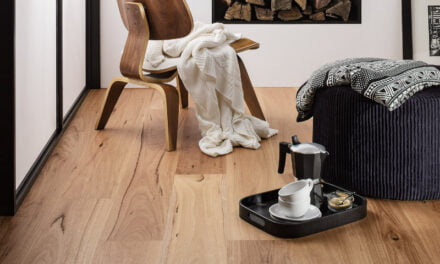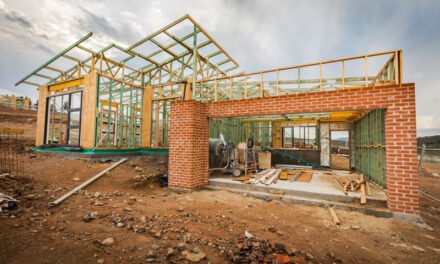It was always going to be interesting looking for editorial for a magazine that I had only just started working on.
Certainly, the biggest learning curve for me has been to find stories that still interest our valued TimberTrader News readers, some of whom have been flicking these pages monthly for 30 years.
The story behind Hydrowood, a Tasmanian logging operation that involves harvesting trees underwater, was brought to my attention by my father.
Before I knew it, I was back in my old haunt, the lovely colonial suburb of Battery Point in central Hobart, speaking with SFM Environmental Solutions Forest (SFM) Operations Manager Darryn Crook about the company’s ambitious underwater venture.
Darryn and I sat down to discuss the project, how the concept came about, and what’s next for this underwater resource that was, for so long, forgotten.
Lost in the past
Many would remember the big push for hydropower across Australia in the 1970’s and 80’s, particularly in Tasmania.
Dams were being created primarily for hydropower generation. In Tasmania, the Lower Gordon dam and Lake Pedder dam were by far the biggest, amongst many others, that were located so remotely that many weren’t harvested prior to the flooding.
As a result, Tasmania now has large hydro dams and lakes with timber still underwater, sitting stagnant and perfectly preserved, just ready for the picking.
“We’ve now got large dams with the timber standing underwater, and because it has been down there, out of the sunlight but with the tannins in the water, the timber is still as good as it was when the dam was flooded,” Darryn explained.
Seemingly frozen in time, specialty timbers including Huon Pine, Sassafras and Myrtle, as well as Eucalyptus and Blackwood, have laid dormant on some of the dam floors for many years.
Now, the timbers which were once thought to be all but lost, are set to be sustainably salvaged by SFM.
Darryn explained that the idea originally came to the SFM Directors after they were inspired at a timber trade show in Canada, where underwater harvesting was being showcased.
“One of our Directors also happens to be a commercial pilot, and he flies over the lakes quite a lot during his trips over Tasmania, and he joined the dots and thought “˜Well, they do it in Canada, why can’t we do it here?’,” he recalled.
Following consultations in 2012 with the lake and dam owners, Hydro Tasmania, as well as the State Government, it was agreed that SFM would investigate the prospect for recovering wood from the lake floor.
Soon enough, Hydrowood was born.
Dam, that’s good timber
Investigations and feasibility studies ensued, and it became clear very quickly that this product, located sometimes up to 50 meters underwater, was quite special.
Sample timber such as the Black Hearted Sassafras was taken out of the lake early in an effort to prove that the resources sitting at the bottom of the dam were worthy of the harvest.
The University of Tasmania’s School of Architecture hopped on board, with Associate Professor Greg Nolan overseeing a feasibility study of the timber alongside Tasmanian furniture designer Simon Ancher, who was one of the first to get a chance to work with the product.
Darryn explained that early indicators that this product would be valuable became obvious during the study and from the design feedback Simon provided them.
“They all raved about it, I think because it has been underwater it appears to be smoother to work with and easier to manipulate.
“The timber appears to not have the same shrinkage characteristics as timber harvested normally above water,” he explained.
“We think this product will settle into the niche, craft market, because essentially this is timber that tells a story – and not to beat around the bush – but it’s an expensive product to harvest, at more than double the price of conventional harvesting,” Darryn added.
A unique challenge
Looking at the potential now, ahead of the first round of harvesting production, which is set to commence mid-2015, Darryn explained that there is possibly 15 years’ worth of work ahead.
The State Government has provided $5 million in funding to Hydrowood under the Tasmanian Jobs and Growth Package, following the success of the initial feasibility studies.
Remarkably, within two years of SFM considering the idea, the project is not far away from being a commercial reality.
Initially, the short-term goal for Darryn and SFM is to successfully execute the first harvest of Lake Pieman.
“Part of our government funding arrangement is that we are on the water by June or early July 2015, for four years on Lake Pieman,” he said.
Darryn and SFM are confident that following the initial four years, the demand for this quality product will be strong enough to continue harvesting long-term across the other Tasmanian hydro dams and lakes for another ten years, or more.
“It’s not just Tasmania that has the potential for this type of harvesting to work. Queensland has several lakes, and there are others across Australia that have a lot of potential,” Darryn added.
The bonus is that all machinery being utilised during the Hydrowood project is completely transportable, adding to the potential for this type of project to be conducted Australia-wide.
Getting technical
The technology involved in the project is what enables Hydrowood to be a reality. SFM joined forces with Caterpillar machinery dealership William Adams in Tasmania, enlisting their engineering expertise to ensure that the machinery would be underwater-ready for an unconventional harvest operation such as this.
“We go out with a barge, using a CAT 568 forest machine that has a 26 metre telescope fitted to it.
“The way I often tell people to visualise it, is to picture a crane, and tip it upside down, because essentially – that’s what it is,” Darryn remarked.
Using the latest underwater sonar technology, the components all work together in perfect harmony without the aid of divers, and are all controlled from above water.
Fruits of the labour
The flow on effect for jobs, and the local support for the project, in some of Tasmania’s most remote locations, is an added bonus for the Hydrowood project.
Darryn and his colleagues at SFM hope to see the once forgotten timber resource from the depths of the hydro dam waters continue on in many forms including furniture, flooring and designs that showcase the unique characteristics of the product.
“We are looking for saw millers who will sell into those unique markets. Currently we’re talking to a few in Tasmania, but it’s looking like these timbers may also end up in Victoria or New South Wales,” Darryn explained.
“We’re looking for saw millers who are interested in the value adding of that product and in the story, because really, it’s just a great story,” Darryn concluded.











